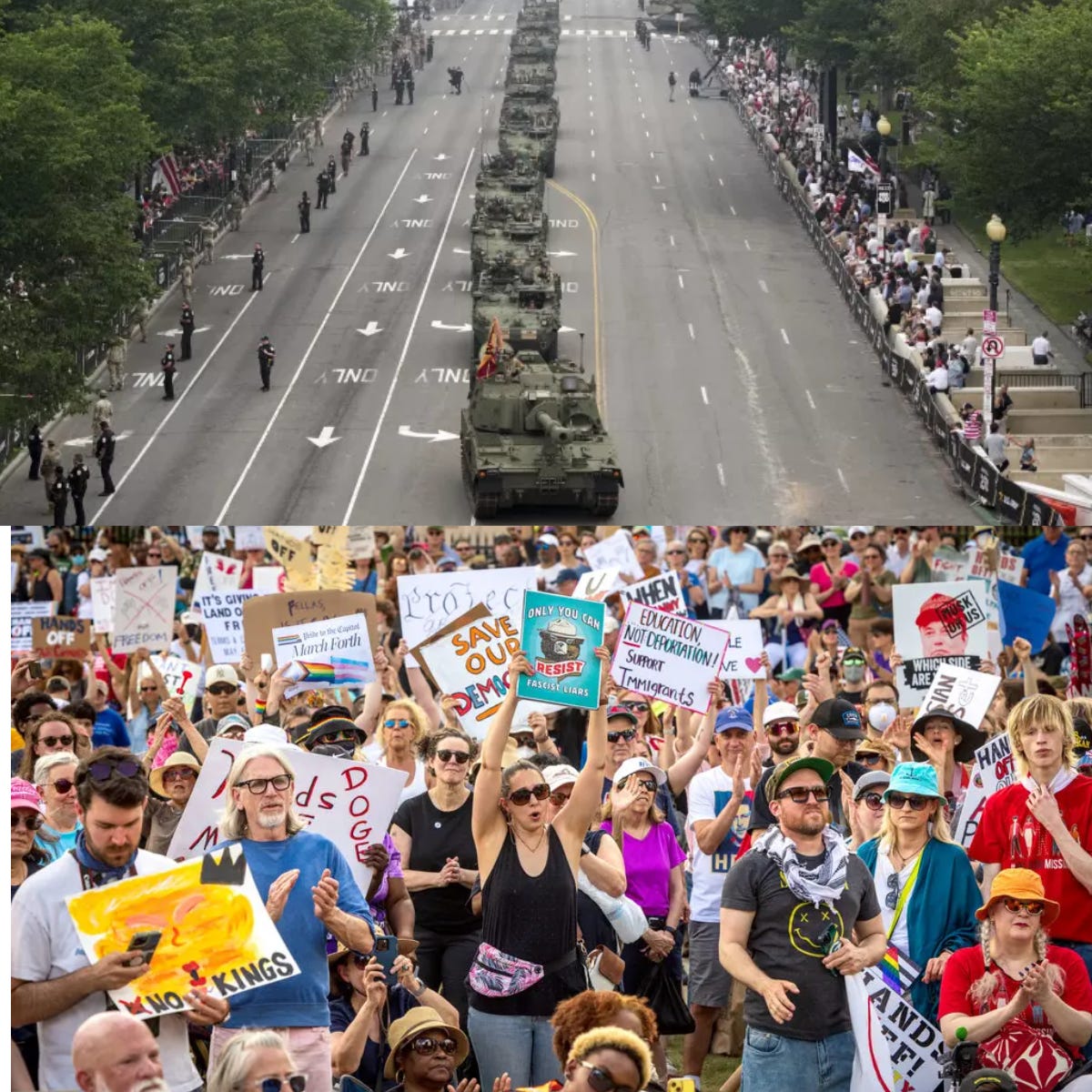Last week, thousands of soldiers were mobilized by the Trump administration on our own soil. The president seeks to intimidate the citizenry through shows of force: marching heavy weaponry down the streets of the capital while brutalizing immigrants, citizens, and elected officials from coast to coast.
In contrast, millions of everyday people mobilized themselves and each other on Saturday. In over 2,100 events in all 50 states, the “No Kings” declaration echoed our ancestors from 250 years ago who declared that the nation would be ruled not by men, but by law.
Liberty and civil conflict are on everyone’s mind on the eve of Juneteenth (which I hope you will find a way to celebrate tomorrow).

Whether it's a protest or a parade, a policy change or effective policing, all action that produces lasting social impact involves collective mobilization.
Getting prepared for action is the essence of mobilization.
Once a vision takes shape, moving to action involves forming a strategy.
What are you trying to accomplish and what steps will you take to get there?
When and where will action take place?
Who will be involved, and how?
I’ve noticed it’s that last question where strategy often fails to mobilize. Whether at home, in business, or in communities, disciplined planning around individuals and teams reveals practical considerations for turning vision to action.
To manifest a vision and carry out a strategy, leaders need to deeply consider who’s going to do the work.
How many people need to be involved? What roles will they play? What skills, knowledge, and tools do they need access to? What motivates them to do the work - and can you provide that motivation (money, impact, or other rewards)?
Large organizations generally undergo this evaluation process by looking at their internal teams, while small businesses tend to rely more on freelancers and agencies. Nonprofits, political campaigns, and social movements seek out volunteers.
Of course today, leaders in all contexts are exploring how much of the “who” is AI.
Where are you focused on a “who” question? Are you hiring for a critical role, interviewing vendors, recruiting volunteers, or testing AI to solve a critical problem?
Have you considered that you’re actually working on a “mobilization” effort?
FYI - If you’d like help running a disciplined strategic planning process that mobilizes the right people and tech — let’s chat. I have one project slot opening up this summer.
What happens after mobilization?
In general, once mobilized, groups of people still need effective leadership. In fact, it’s often at this point where we clearly see what leaders are really made of.
Maybe you can get people to turn out, but can you lead them to do the hard things? The right things? The right way?
In business, mobilization without manifestation looks like employee and customer churn.
In society, it looks like chaos.
We can’t predict what the large scale mobilization of peaceful protestors or heavily armed militaries will bring about for our society.
The tension is real and won't resolve overnight.
We’ve all got our work cut out for us…
mobilizing ourselves to follow through on our commitments and live our values….
mobilizing the right folks to carry out our organizational mission(s)…
and leading our neighbors, friends, family, and communities to peaceful and just outcomes for our nation and the world.
Until next week,
-Joe “Mobilizing Mobilizers” Ballou
PS. If you’re interested in more in-depth commentary on political topics, I’m thinking about updating the “US Politics” section to “Movement Leadership.” I’ll be reaching out to some of you individually to get feedback on how to evolve the Substack like this, but if you’d like to chat please let me know!
PPS. I mentioned this above - I’m taking on one new client to run a “Mobilize” project this summer. To clarify your strategy and accelerate execution on a critical initiative in less than 3 weeks, book a time and we can determine if this would be a good fit.



